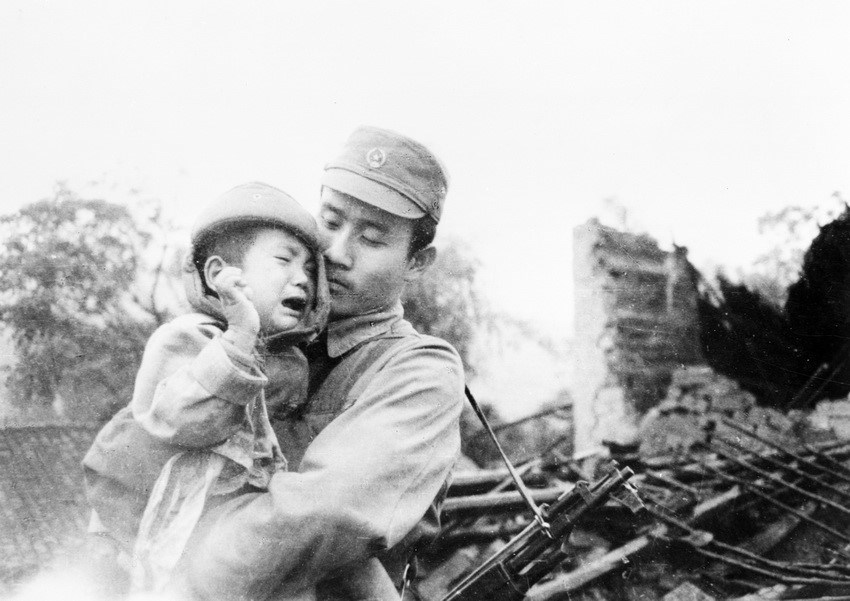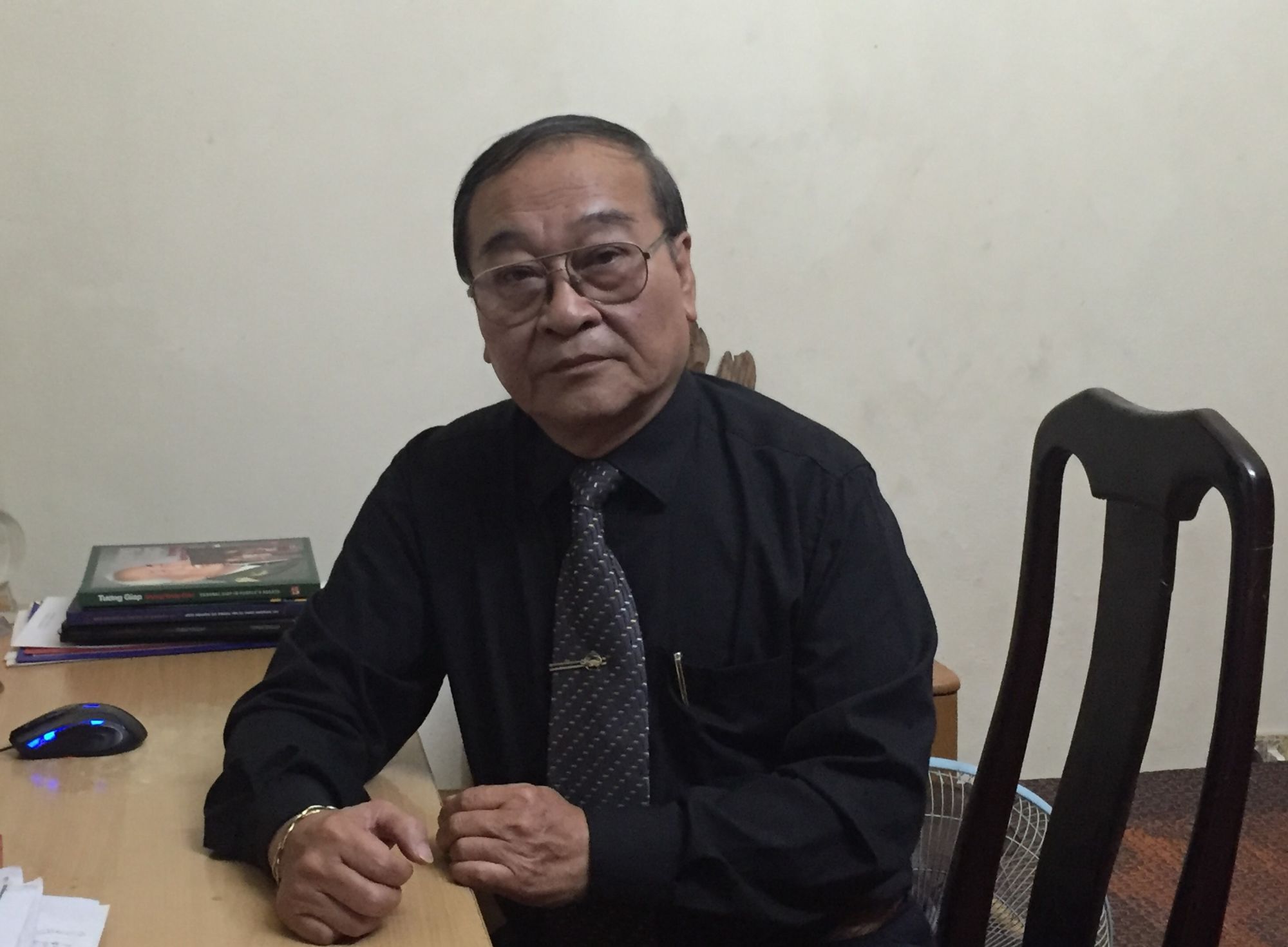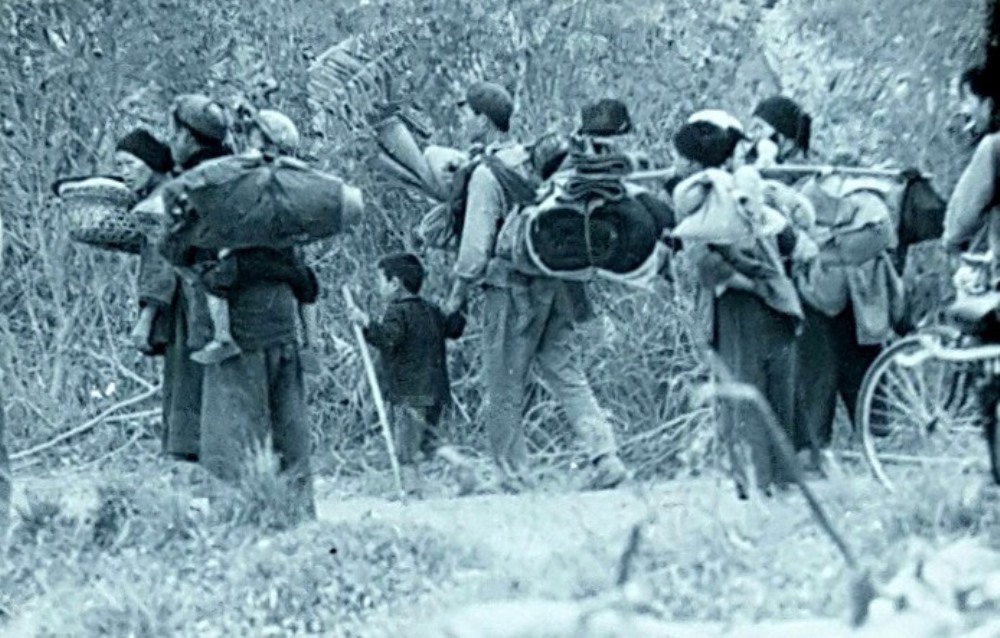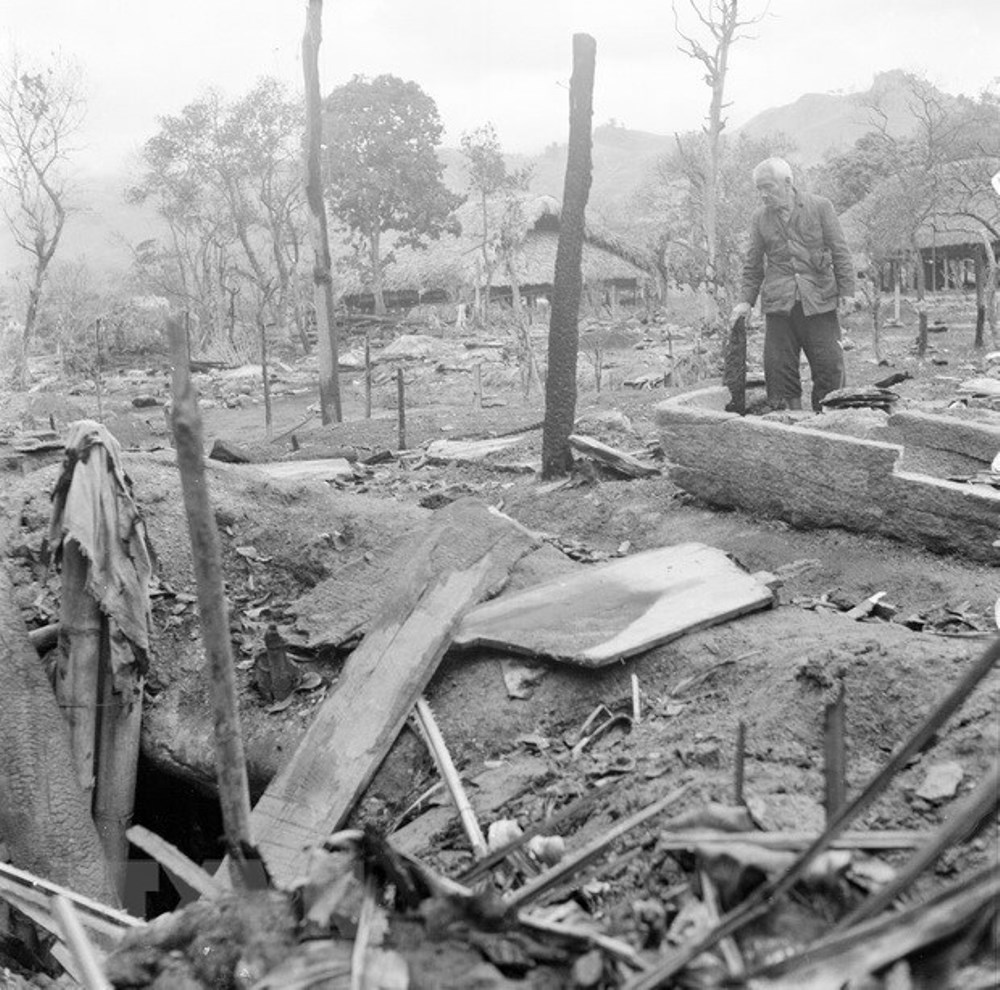Hanoi (VNA) – From Hanoi, photographer Tran Tuan went along the Truong Son mountain range in the war against the US, and then crossed forests and rivers to the northern border during the war for the defence of the nation.
His journeys help his successors imagine the way of a “fighter” in the months and years of the devotion of youth for the nation, contributing to the keeping of the uninterrupted flow of information and images from the battlefields, thus maintaining the pioneer role in the Vietnam News Agency in the field of information.
The photos he took at bloody battlefields are those of archival value, depicting victories and staunch spirit of our people and army, as well as the enemies’ crimes. Four decades have passed by and the life have experienced various ups and downs, but the memory of the 1979 Spring in the Motherland’s northern border remains fresh in his mind.
Those are the unforgettable and must-not-forget months and years for every Vietnamese.
– What were your feelings when you received the order to join the war for the defence of the northern border in 1979 as a battlefield photographer?
Photographer Tran Tuan: Those are the unforgettable and must-not-forget months and years for every Vietnamese.
As field clashes between our forces and those on the other side of the border line happened in 1978, we were ready to take our cameras and backpacks. At the end of that year when photographer Quang Trieu of the photo department of the Vietnam News Agency was wounded at Bac Luan bridge in Quang Ninh province, the leadership of the VNA decided to send me to continue his job. At that time, Quang Ninh was a hot spot with complicated situation.
In mid-February 1979, fisher Nguyen Dinh Phuc was fishing in Tra Co sea in Quang Ninh province when he was shot dead by a foreign crew. Arriving at the site, I found many foreign correspondents. Continuous reports released right afterward by the Vietnamese side as well as news agencies and press outlets of the world helped the public opinion inside and outside the country get a clear understanding of the incident and the crimes of the other side as they pointed their guns at innocent fishermen. The public was full of anger and hatred.

After the incident, I was sent to the Cao Bang, Lang Son frontiers. The constant movement and orders made me understand that the war was inching in. Once again, the history tested our nation. I am proud of my job but from a certain angle, I don’t want to become a war correspondent. That is not because I am afraid of being killed or wounded but I know that when I am, my home country will become a battlefield and the blood of my fellow country people will continue to shed.
In the small hours of February 17, 1079, suddenly Vietnam had to coper with a war on the whole of its northern border as the Chinese administration waged a large-scale aggression war on Vietnam’s territory from Po Hen in Quang Ninh province to Pa Nam cum in Lai Chau province.
As the country was in danger and realising our legitimate self-defence right, our people and army took up arms in the fight for the safeguard of independence, sovereignty and territorial integrity. In that context, we do not have time and mind to hesitate, think over or be scared. The common atmosphere pulled me to the flow.

– How was the border area then?
Photographer Tran Tuan: In fact, hostilities started in late 1978. People can feel surprised with the timing of the launch of the war, but not with the war itself.
It was in late winter, chilly cold, strong wind and mist blanketed the roads! It was not long after our country got out of two long resistance wars and was fighting the Pol Pot forces in the southwest. The situation was very critical. Successive difficulties and sufferings. However, together with the daily study and production activities, out people and semi-armed forces were actively preparing and training themselves to cope with the changes of the situation.
Before February 17, 1979, the life was normal but in the early morning of that day, it was reported that Chinese tanks were gathering in Cao Bang town. At that time of the year, streams were dry. The enemy’s tanks rumbled along the beds of the streams towards the centre of the town. On their way to the destination, they destroyed all that fell in their sight. Local screamed, and they got the order to move in the direction to Tai Ho Sin (Hoa An, Cao Bang).

– Witnessing that scene, how did you feel?
Photographer Tran Tuan: Very painful! But we had to keep the pain down so as to not adversely affect the morale of the people around us.
The reality prompted me to take my camera and rush to the battlefield. Nobody forced me, but I made it an order to myself: I must capture the staunch combat spirit of our people and army as well as the brutal crimes of the enemy. I must contribute to the common voice, helping the public opinion inside and outside the country to understand correctly on the just struggle of my fellow country people as well as the crimes committed by the enemy.

My experiences as a war correspondent during the Ho Chi Minh campaign in 1976 provided much help to me in my work in 1979. I knew that I had to focus on the moments and images which could highlight the contents and the messages that need to express. And I ordered myself not to waste my film rolls and cameras, as the materials then were very scarce.
I made it an order to myself: I must capture the staunch combat spirit of our people and army as well as the brutal crimes of the enemy. I must contribute to the common voice, helping the public opinion inside and outside the country to understand correctly on the just struggle of my fellow country people as well as the crimes committed by the enemy.
Working as a war correspondent during both the Ho Chi Minh Campaign in 1975 and the war for the defence of the northern border in 1979, but I could feel a big difference: joy towards the national reunification, and pains and hatred for our fellow country people’s blood shed along the border line. The country had been reunited but the gun fire had not ceased, my compatriots could not live in peace.
– What are the most haunting images to you?
Photographer Tran Tuan: Many years after that, I could not erase my feeling when I saw with my eyes what remained of Tong Chup village, Hung Dao commune, Hoa An district, Cao Bang province after the enemy’s raid.
Besides, I could not either forget the scene of devastation and death of Cao Bang town when I came back in March 1979: no electricity posts stood upright, houses and schools leveled, scattering carcasses of cattle and poultry. Even household rice husking mills were broken into pieces.

– Have you got any chance to meet again those in your photos?
Photographer Tran Tuan: I have revisited the former battlefields several times but have not got any chance to see them again.
No wars go without casualties. What makes me feel unceasingly painful and haunts me up to now is that the stories and images of that war of justice by our nation are still very vague in the books and the media. Our compatriots shed their blood and sacrificed their youth to keep the border line in peace, but their devotion has not been much mentioned.
What makes me feel unceasingly painful and haunts me up to now is that the stories and images of that war of justice by our nation are still very vague in the books and the media.
– Thank you very much for the interview!-VNA